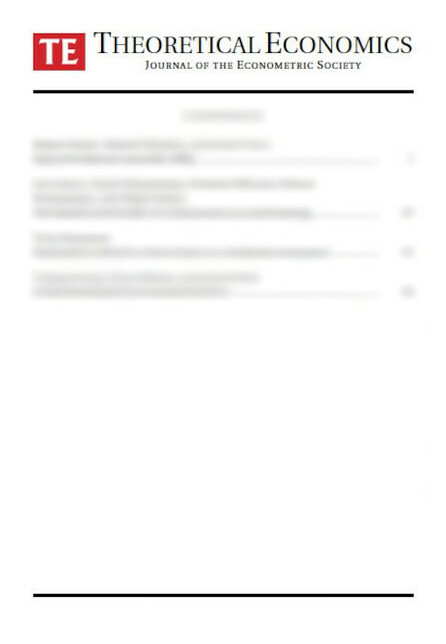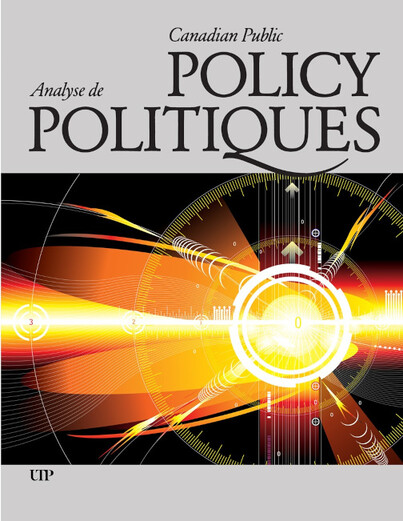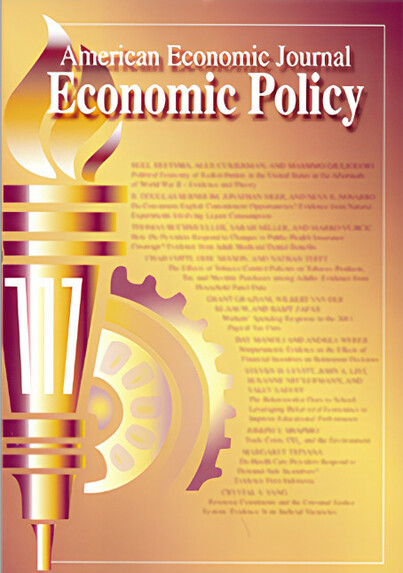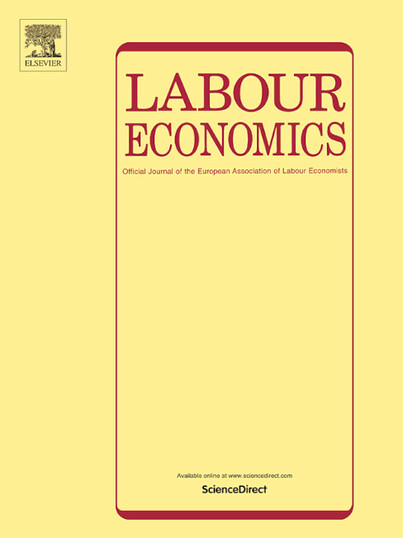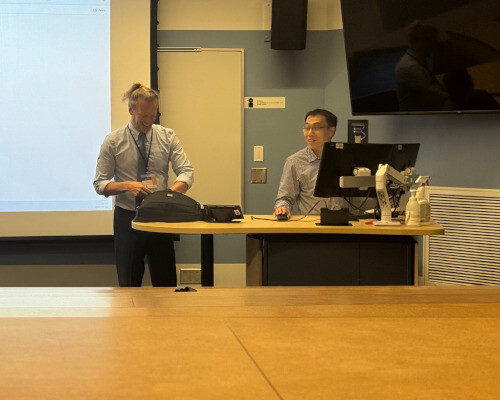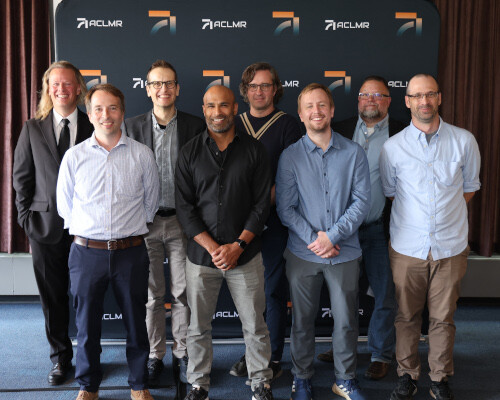New Economics Papers (from NEP)
The following works presented are external working papers published to the NEP-LMA and NEP-LAB RSS feeds. This content is provided to show a wider view of research being conducted across the areas of Labor Markets - Supply, Demand, and Wages, as well as Labour Economics. Works listed may have no relation to ACLMR or the ACLMR team and are published out of academic interest only.
Labour Markets
2025-09
Employment Effects of a Statutory Minimum Wage: Evidence from a National Reform of the German Apprenticeship Market
To enhance the attractiveness of vocational education and training and to secure an adequate supply of skilled labour, the German government introduced a statutory minimum apprenticeship wage. Since January…
2025-09
Vocational Education, Earnings and Job Satisfaction in Europe
This paper examines the earnings and job satisfaction of Vocational Education and Training (VET) graduates in the European Union (EU) using two definitions of vocational education: a self-reported definition…
2025-09
Social Substitution? Time Use Responses to Increased Workplace Isolation
This paper examines how people adjust their time use when experiencing more time alone, a growing share of adults’ lives. We exploit the dramatic rise in remote work following the onset of the pandemic,…
2025-09
Demand for Green Skills in an Evolving Landscape
How does firms’ skill demand change as the business landscape evolves? We present evidence from the green transition by analyzing how hurricanes impact demand for green skills. These disasters signal…
2025-09
Combining Part-time Work and Social Benefits: Empirical Evidence from Finland
We use detailed, population-wide data from Finland to provide evidence of the impact of earnings disregard policies on part-time work during unemployment spells.The share of part-time workers among benefit…
2025-09
Making the Invisible Hand Visible: Managers and the Allocation of Workers to Jobs
Why do managers matter for firm performance? This paper provides evidence of the critical role of managers in matching workers to jobs within the firm using the universe of personnel records from a large…
2025-09
The Effects of Minimum Wage Increases on Poverty and Food Hardship
We study how minimum wage (MW) increases affect poverty and food hardship in the United States from 1981 to 2019. Applying stacked difference-in-difference models and the Supplemental Poverty Measure…
2025-09
Beyond Human Capital: Mobility intentions, IT skills, and the Early Gender Wage Gap
In most countries, women systematically outperform men in academic achievement across fields of study. Yet within a year of graduation, they earn less, face lower employment rates, and are more likely…
2025-09
Developing a New European Indicator of Potential Skill Shortages
Skill shortages are a type of skill mismatch whereby employers are unable to fill existing vacancies due to a lack of suitably qualified and/or skilled candidates. Despite representing a significant concern…
2025-09
The Heterosis Effect in Human Capital and Wealth Accumulation
In genetics, heterosis describes how crossbreeding produces offspring with greater fitness than their parents. We propose a socioeconomic heterosis hypothesis: does genetic diversity at the individual…
2025-09
Estimating heterogeneous returns to college by cognitive and non-cognitive ability
Recent work has highlighted the significant variation in returns to higher education across individuals. I develop a novel methodology --- exploiting recent advances in the identification of mixture models…
2025-09-18
Pay Inequity and Peer Dynamics: New Field Evidence on Labor Market Sorting
Performance pay raises productivity but can also trigger costly peer dynamics, which can influence workers’ preferences over pay schemes. We test whether sabotage risk drives compensation choices…
2025-09
Why Don’t Struggling Students Do Their Homework? Disentangling Motivation and Study Productivity as Drivers of Human Capital Formation
Using field-experimental data (study-time tracking and randomized incentives), we identify a structural model of learning. Student effort is influenced by external costs/benefits and unobserved heterogeneity:…
2025-09
Low-Wage Jobs, Foreign-Born Workers, and Firm Performance
How do migrant workers impact firm performance? We exploit an unexpected Change in firms’ likelihood of securing low-wage workers through the U.S. H-2B visa program to address this question. Using comprehensive…
2025-09
Substituting Talent with Transactions: Acquisitions as Responses to Immigration Restrictions
We examine how firms respond to talent scarcity caused by restrictive immigration policies. We argue that when firms cannot build capabilities internally through hiring, they alter their boundaries by…
2025-09-22
The College Premium Rollercoaster and the Rebound of Lifetime Wage Growth: A Structural Analysis
In this paper, the authors develop a general equilibrium overlapping generations model with human capital to analyze the evolution of the wage premium associated with university education and lifetime…
2025-09
No Payoff from Time Off? Mandated Paid Vacation and Late-Career Employment
This study examines the impact of receiving one additional week of paid vacation on labor market attachment among Norwegian workers aged 60+. Employing a triple-differences estimation strategy, we exploit…
2025-09
The Shift from Persistent Inequality to Earnings Instability in Belgium
Using rich administrative data from 2005 to 2021 for Belgium, this paper analyses how earnings dynamics differ across socio-demographic groups, focusing on gender and education. We find that while permanent…
2025-09
Errors in Survey and Administrative Data on Employment Earnings: Austria and the United Kingdom Compared
We contribute new cross-national evidence about the nature of measurement errors in employment earnings, fitting the same error components model to harmonised earnings data for Austria and the UK. The…
2025-09
Public Payment Mandates and Provider Supply
Public insurance reimbursement policies shape the structure and reach of healthcare markets. In this study, we examine the 1980 federal Medicaid mandate requiring states to reimburse Certified Nurse-Midwives,…
2025-09
Should States Reduce Teacher Licensing Requirements? Evidence from the Rise of For-Profit Training Programs in Texas
We provide a comprehensive analysis of a Texas policy that relaxed teacher licensing requirements and created a large for-profit training industry. Using detailed administrative data, we show that for-profit-trained…
2025-09
The Formation of AI Capital in Higher Education: Enhancing Students’ Academic Performance and Employment Rates
The study evaluates the effectiveness of a 12-week AI module delivered to non-STEM university students in England, aimed at building students’ AI Capital. An integral part of the process involved the…
2025-09
The Effect of Broadband Internet on Mental Health-Related Disability Insurance Claims
We examine the causal impact of high-speed internet on adult mental health using administrative data from Belgium. We exploit predetermined telecommunications infrastructure and broadband technology's…
2025-09-19
Are Firms Hiring Enough Workers? Firm-level Evidence from Finland’s Manufacturing and Service Industries
Abstract Microeconomic theory posits that in competitive markets, wages are determined by the marginal revenue product of labor. This study empirically tests this theoretical prediction using comprehensive…
2025-09
Business Owners and the Self-Employed: 33 Million (and Counting!)
Entrepreneurs are known to be key drivers of economic growth, and the rise of online platforms and the broader “gig economy” has led self-employment to surge in recent decades. Yet the young and small…
2025-09
Aggregating Epigenetic Clocks to Study Human Capital Formation
Epigenetics is the study of how people’s behavior and environments influence the way their genes are expressed, even though their DNA sequence is itself unchanged. By aggregating age-related epigenetic…
2025-09
The Impact of Neighbour, Colleague, and Family Peers on Parental Labour Supply
Child penalties in paid working hours are persistent and widen the gender earnings gap. This paper studies an important mechanism through which working hours are affected: peer effects. Using three unique…
2025-08-22
Assessing Maximum Employment
We suggest a core set of indicators for evaluating the position of the labor market relative to maximum employment. The unemployment rate remains the key indicator of the cyclical position of the labor…
2025-09-25
Extreme Temperatures, Health and Retirement
This paper provides novel evidence of the impact of temperature fluctuations on retirement behavior and underlying mechanisms, combining 30 years of rich longitudinal survey data with granular daily weather…
2025
Air Quality and Conferences’ Engagement
There is limited evidence on the non-health impacts of air pollution, including productivity in the workplace and behavior. We examine the effect of air pollution on participation, collaboration, and…
2025-09
An estimation of the Phillips curve in Mexico using city-level data
We estimate the slope of the Phillips curve in Mexico between 2005 and 2020 using city level data. We overcome the endogeneity of unemployment and core inflation through a panel instrumental variable…
2025-09-18
Tricked into trouble: Deception, threat, and coercion in exploitative labor relations
Exploitative labor conditions are a massive global challenge, generating substantial illicit gains for delinquent employers. However, their strategic logic remains poorly understood. Here, we study the…
2025
Asylum Seekers, New Businesses, and Job Creation
How do asylum seekers affect host-country economies from a supply and demand perspective? What share of such immigration shocks is absorbed by existing vs. new businesses? To study these questions, we…
2025-09
Rethinking Credit and Capital Subsidies to Create Jobs Through MSMEs: The Role of Impact Investment Funds
The paper discusses the limits of credit and capital subsidies to finance MSMEs in the presence of jobs-related externalities. Using a stylized model of the decision to lend to enterprises with different…
2025-09
Has oil richness been a force for income equality in Venezuela over the long term?
From a long-term perspective little is known about income inequality in Venezuela. This is regrettable as the country offers a unique opportunity to study distributional dynamics in an economy dominated…
Labour Economics
2025-09
Workplace Peer Effects in Fertility Decisions
This paper examines the impact of co-workers’ fertility on individual fertility decisions. Using matched employer-employee data from Italian social security records (2016–2020), we estimate how fertility…
2025-09
The Downside of Fertility
The fertility decline is everywhere in the world today. Moreover, the decline goes decades back in the histories of rich countries. Birthrates have been below replacement in the U.S. and Europe since…
2025-09
The Unequal Motherhood Penalty: Maternal Preferences and Education
We study how maternal preferences interact with education to shape the motherhood penalty. Using rich Finnish registry data and the quasi-random gender of the firstborn child, we show that mothers across…
2025-09
Beyond the Border: Labor Market Effects of U.S. Immigration Enforcement Policies in El Salvador
By 2020, one in four Salvadorans lived abroad, with 88 percent residing in the United States. The remittances to GDP ratio was about 25 percent, highlighting the country’s dependence on migration. This…
2025
Explaining the Dynamics of the Gender Gap in Lifetime Earnings
Using a long administrative panel dataset for France, we analyse the dynamics and drivers of the narrowing gender gap in lifetime earnings (LTE) for cohorts born after WWII. We find that the level, trends,…
2025-09
Riding to Opportunity: Geographic and Household Effects from the Orphan Trains
Between 1854 and 1929, approximately 200, 000 children were transported from East Coast cities to new homes in the American West, motivated by the theory that a change of geography and household environment…
2025-09
Female labor force participation in historical census microdata
How reliable is historical microdata? Understanding historical labor force participation is crucial for assessing long-term trends in economic development and intergenerational mobility. Most existing…
2025-09
Gender Identity Norms, Mental Health, and Relationship Strain
Although studies have evaluated the costs of violating the male breadwinner norm, little is known about the mental health consequences, particularly for common conditions such as depression and anxiety.…
2025-09
Insuring Labor Income Shocks: The Role of the Dynasty
We provide empirical evidence on the importance of a relatively understudied channel of insurance against labor income shocks: transfers from (cash-rich) parents to (cash-short) children when the latter…
2025-08-21
Decomposing Trends in the Gender Gap for Highly Educated Workers
This paper examines the gender gap in log earnings among full-time, college-educated workers born between 1931 and 1984. Using data from the National Survey of College Graduates and other sources, we…
2025-09
Happier at Work? The Impact of Working at an Employee-Owned Firm and Working from Home on Job Satisfaction
This paper examines the impact of working for an ESOP firm and Working-From-Home (WFH) on job satisfaction in the National Longitudinal Survey of Youth 1997 (NLSY97) and the General Social Science (GSS)…
2025-09
Unemployment Insurance, Wage Pass-Through, and Endogenous Take-Up
This paper studies how unemployment insurance (UI) generosity affects reservation wages, re-employment wages, and benefit take-up. Using Benefit Accuracy Measurement (BAM) data, we estimate a cross-sectional…
2025-09
Unions in Developing Countries
The effects of trade unions on firm performance are theoretically ambiguous. The sizable empirical literature on their effects is almost exclusively confined to developed countries, particularly those…
2025-09
Board Gender Diversity and Workforce Composition, Compensation, and Retention for U.S. Publicly Traded Firms
We use administrative data from the U.S. Census to estimate the effect of female director representation on workplace gender diversity and women’s earnings. Using a difference-in-differences estimator…
2025-09
Upholding Unions – How Colleagues Shape Union Membership?
Social interactions between young and senior colleagues might have consequences for union membership uptake of young workers, thus influencing public policies on unions. We apply Norwegian administrative…
2025-09
From Bust to Boom: The Great Depression and Women's Fertility
The United States experienced dramatic swings in fertility over the course of the early- and mid-20th century. This paper presents a novel explanation for these changes, linking the Great Depression to…
2025-09
Human Capital and Racial Inequality in the US Labor Market
If racial gaps in measures of human capital like educational attainment and standardized test scores were eliminated, what would happen to racial disparities in wages, employment, and other labor market…
2025-09
Credit Conditions, Inflation, and Unemployment
We construct a New Monetarist model with labor market search and identify two channels that affect the long-term relationship between inflation and unemployment. First, inflation lowers wages through…
2025-09-19
A new model of parental time investments: A paradigm shift for addressing gender inequality in the labor market
This paper introduces a new framework for understanding the persistence of the motherhood penalty by emphasizing the role of on-call care. Using a pseudo-panel event study based on the 2003-2022 American…
2025-09
How People Use ChatGPT
Despite the rapid adoption of LLM chatbots, little is known about how they are used. We document the growth of ChatGPT’s consumer product from its launch in November 2022 through July 2025, when it…
2025
Work-from-Home and Wage Convergence Across Cities: An Exploration
This paper provides evidence on a WFH-related hypothesis that has not previously been tested empirically. The hypothesis is that the presence of fully remote workers, for whom residence and work locations…
2025
Gender Differences in University Enrollment and STEM Major: The Role of Tuition Policy in Australia
We analyze whether men and women respond differently to tuition variation for both university entry and STEM major choice, using a 30-year Australian individual-level administrative dataset. The Australian…
2025-09
AI Business Applications Training and Business Outcomes: An Inclusive Intervention for Underrepresented Entrepreneurs
This study investigates the associations between university-led training in AI business applications and business outcomes among small firms, with a focus on underrepresented entrepreneurs in England,…
2025-09
Inferring Fine-grained Migration Patterns across the United States
Fine-grained migration data illuminate important demographic, environmental, and health phenomena. However, migration datasets within the United States remain lacking: publicly available Census data are…
2025-09
Five Facts About the First-Generation Excellence Gap
Parents are crucial to children’s educational success, but the role of parental education in fostering academic excellence remains underexplored. Using longitudinal administrative data covering all…
2025-09
Multigenerational Inequality
A growing literature provides evidence on multigenerational inequality – the extent to which socio-economic advantages persist across three or more generations. This chapter reviews its main findings…
2025-09-05
Evaluating Macroeconomic Outcomes Under Asymmetries: Expectations Matter
Asymmetries play an important role in many macroeconomic models. We show that assumptions on household and firm expectations play a key role in determining the effects of these asymmetries on macroeconomic…
2025-09
Gendered decision making in explore-exploit tasks
Many real-world scenarios involve explore-exploit decisions, balancing the pursuit of better opportunities with securing a certain but potentially suboptimal outcome. Do gendered approaches to these decisions…
2025-09
Abortion, Economic Hardship, and Crime
We study how abortion access affects economic hardship and crime. Using a database of abortion provider locations and operations in Texas from 2009–2019, we exploit variation in travel distance to the…
2025-09
More to Live for: Health Investment Responses to Expected Retirement Wealth in Chile
An important but poorly understood way that economic development may influence health is through the private incentives that it creates for individuals to invest in their own health. In this paper, we…
Certain data included herein are derived from the ©️️️️️ Web of Science 2025 of Clarivate. All rights reserved. You may not copy or re-distribute this material in whole or in part without the prior written consent of Clarivate.

